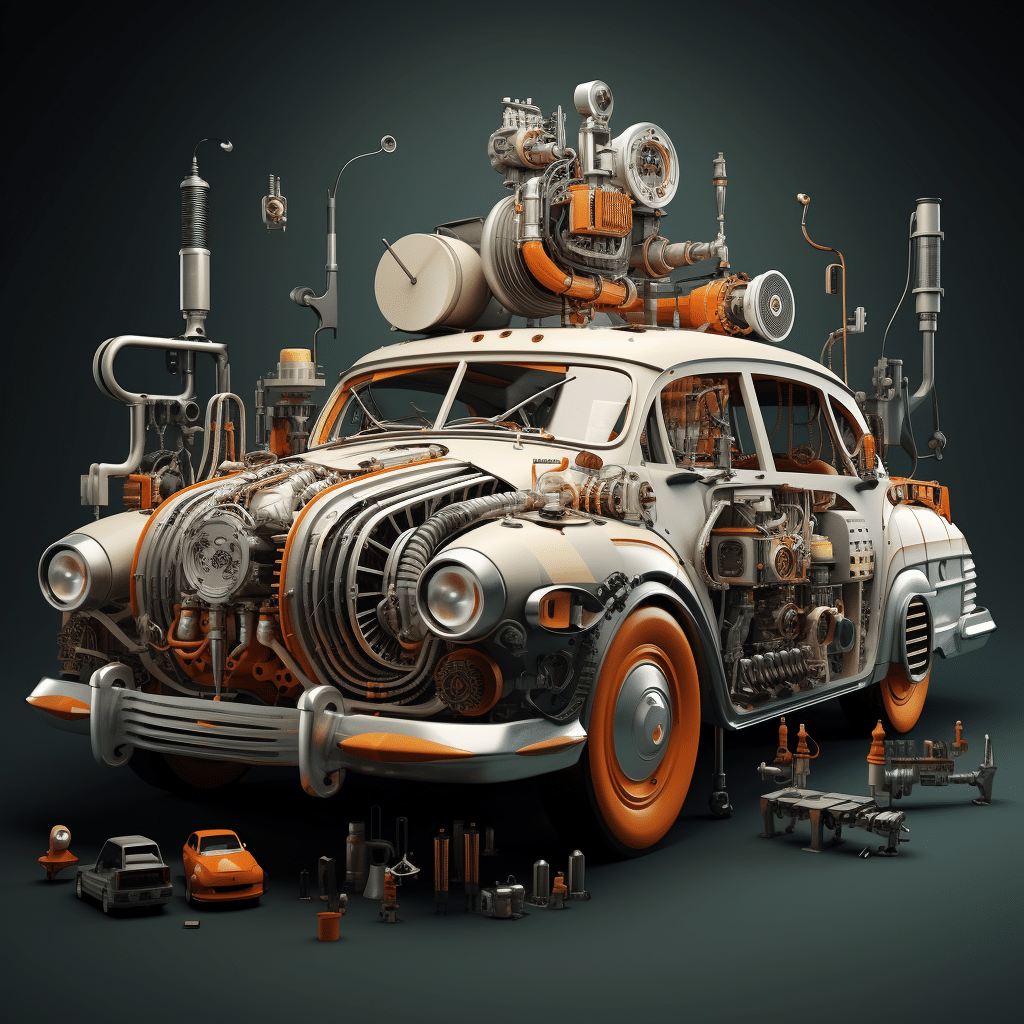
Mastering Car Characteristics: Safety, Performance
Car characteristics: Comprehending a car’s characteristics is crucial for anyone who owns or drives one. Knowing them can ensure safety, efficiency, and excellent performance. Being informed about features and functions helps when making decisions about maintenance, upgrades, and even purchasing.
Size and body type are important characteristics. Cars have contrasting dimensions and designs, which can influence factors such as maneuverability, cargo capacity, and fuel efficiency. Knowing these makes it easier to select a car that suits requirements.
Car Characteristics
Engine type is another significant characteristic. Cars can be powered by gasoline, diesel, electric, or hybrid engines. Each has different advantages and disadvantages concerning fuel efficiency, performance, and environmental impact. Information on these differences can guide individuals to pick an engine that aligns with their preferences and values.
Safety features are also essential. Airbags, anti-lock braking systems, and advanced driver assistance technologies are some of the safety features modern cars are equipped with. Understanding these allows individuals to prioritize safety when buying or using a vehicle.
Drivetrain system understanding is important for comprehending how power is transmitted from the engine to the wheels. Front-wheel drive, rear-wheel drive, and all-wheel drive – each has its own benefits concerning traction control and handling. Being knowledgeable about drivetrain options enables individuals to choose a configuration suitable for their driving needs and preferences.
Technology features are also a key part of car characteristics. Infotainment systems, navigation systems, smartphone integration capabilities, and advanced connectivity options are some of the technological advancements today’s cars are fitted with. Knowing these features helps individuals to utilize the capabilities offered by their car.
To get the most out of this knowledge on car characteristics:
- Regular service and maintenance is essential for optimal performance and longevity. Following the manufacturer’s recommended service schedule can detect any potential issues early and avoid major breakdowns.
- Upgrading components such as tires or suspension systems can boost a car’s handling, comfort, and overall driving experience. Consulting professionals or researching can guide individuals in making informed upgrade decisions.
- Regularly checking and maintaining fluid levels, such as engine oil, coolant, and brake fluid, ensures vital components are properly lubricated and cooled, reducing the risk of mechanical failures.
- Keeping updated with the latest trends and advancements in automotive technology helps individuals make educated choices when purchasing or using a car. This can be from understanding new safety features to knowing how to use the vehicle’s technological capabilities.
By understanding a car’s characteristics and putting these suggestions into practice, individuals can enjoy an improved driving experience while ensuring their own safety and maximizing their car’s longevity.
Safety Features:

Exploring five important safety features that a car should have (e.g., airbags, anti-lock braking system, traction control, lane departure warning, blind-spot detection)
Safety is key when it comes to cars. To make sure passengers and other drivers are safe, cars must be equipped with certain safety features. Let’s explore five of the most important ones:
- Airbags: These inflatable cushions absorb impact in an accident, reducing the risk of major injuries.
- Anti-Lock Braking System (ABS): ABS stops wheels from locking up in an emergency, allowing the driver to stay in control.
- Traction Control: This feature keeps stability and prevents wheel slippage when accelerating on slippery surfaces.
- Lane Departure Warning: This system detects if a car is unintentionally drifting out of its lane and warns the driver.
- Blind-Spot Detection: Blind-spot detection helps drivers stay aware of vehicles in their blind spots, making lane changes safer.
Modern cars often come with more advanced safety tech such as adaptive cruise control, forward collision warning systems, and automatic emergency braking. These technologies further improve safety, decreasing the chances of accidents.
My friend had a life-changing experience with their car’s safety features. On a wet day, they lost control due to hydroplaning. Thankfully, their car’s traction control activated, avoiding a dangerous crash. This incident showed me how important having reliable safety features in cars really is.
Performance Features:
Discussing five key performance features that contribute to a car’s overall performance (e.g., engine power and torque, acceleration, handling and suspension, fuel efficiency, braking system)
Performance Features are the characteristics of a car that contribute to its performance. These include:
- Engine Power and Torque: For swift acceleration and cruising. Torque is the pulling power.
- Acceleration: 0 to 60 mph in a matter of seconds, for quick overtaking.
- Handling and Suspension: Precise steering control and a smooth ride.
- Fuel Efficiency: Cost-effective and reduces emissions.
- Braking System: Crucial for safety, to stop quickly with stability.
Advanced tech features like traction and stability control enhance grip and stability. To maximize performance:
- Regular maintenance, such as oil changes, filter replacements, and tuning.
- Maintain tire pressure for handling and fuel efficiency.
- Upgrade to high-performance tires for grip and cornering.
- Use premium-grade fuel for the engine’s full potential.
By using these features properly, drivers can experience the thrill of a well-performing car while keeping it safe and efficient.
Interior Features:
Highlighting five essential interior features that enhance comfort and convenience for car occupants (e.g., seating capacity and comfort, infotainment system, climate control, storage space, connectivity options)
When it comes to the interior of a car, several features are essential for comfort and convenience. Seating capacity and comfort, infotainment system, climate control, storage space, and connectivity options are key components.
- Seats and Comfort: Spacious cabin with comfortable seats make driving enjoyable for the driver and passengers.
- Infotainment System: This feature allows occupants to connect their devices and control music or navigation systems.
- Climate Control: This feature enables occupants to adjust temperature settings according to their preferences.
- Storage Space: Cup holders, glove compartments, and trunk space provide enough room to store items.
- Connectivity Options: Cars with USB ports or Bluetooth connectivity allow passengers to stay connected throughout their journey.
Ergonomic seat designs that provide support and intuitive control interfaces that enable effortless operation are additional details that enhance these interior features. Lumbar support in seats and voice-activated controls can provide added comfort and a safer driving experience.
To sum up, these features enhance car occupants’ comfort and convenience. Seating capacity and comfort, infotainment system, climate control, storage space, and connectivity options all contribute to creating interiors that meet today’s tech-savvy and comfort-oriented drivers’ needs.
Exterior Features:
Describing five significant exterior features that contribute to a car’s aesthetics, aerodynamics, and functionality (e.g., body design, headlights and taillights, alloy wheels, sunroof, spoiler)
Exterior features play a huge role in how a car looks, and its performance/functionality. These five are essential:
- Body Design. It’s the car’s base, defining shape, lines and curves. Sleek and aerodynamic designs improve fuel efficiency and reduce air resistance.
- Headlights & Taillights. Illumination at night and visibility to other drivers on the road. Modern cars come with stylish LED headlights and taillights.
- Alloy Wheels. Improves performance, handling, acceleration and braking. Plus, they come in various designs and finishes, for personalisation.
- Sunroof. Add an open-air experience to driving. Natural light, an airy atmosphere and scenic views while on the move.
- Spoiler. Associated with sports cars or high-performance vehicles. Improves aerodynamics and reduces drag, increasing speed stability.
Plus, AutoTrader.com says these features make cars more than just transportation devices; they’re expressions of individuality and style.
Advanced Technologies

Exploring five advanced technologies found in modern cars that enhance safety, connectivity, and entertainment (e.g., adaptive cruise control, automatic emergency braking, keyless entry and ignition, smartphone integration, surround sound system)
Advanced Technologies
Experience five advanced technologies found in modern cars. See how they improve safety, connectivity, and entertainment!
Modern cars are equipped with unbelievable tech. Let’s explore five game-changing innovations that have revolutionized the automotive industry.
Adaptive Cruise Control
Say goodbye to speed adjustments on long trips. Adaptive cruise control adjusts your car’s speed to stay safe from the vehicle ahead. It takes away the hassle of accelerating and braking, making drives more comfortable.
Automatic Emergency Braking
This intelligent tech senses potential collisions and applies emergency braking if necessary. It provides an extra layer of safety for both you and other road users.
Keyless Entry and Ignition
No need to search for car keys. Keyless entry and ignition systems unlock and start vehicles effortlessly with a button or smartphone app. It’s a touch of luxury.
Smartphone Integration
Integrate smartphones into cars! Modern cars offer systems to access music playlists, receive calls, send messages, navigate, and more without taking eyes off the road. Stay connected and safe.
Surround Sound System
Enjoy an extraordinary audio experience with a surround sound system in your car. Listen to music or watch movies on a road trip. This tech enhances the quality of sound by creating an encompassing audio environment inside your vehicle.
These advancements seem like sci-fi! But they are a reality. As tech advances, we can expect further innovations to make driving safer, connected, and entertaining.
True History: Adaptive cruise control dates back to aircraft in the late 20th century. It made its way into cars in the early 2000s. Automatic emergency braking and keyless entry systems were gradually added to enhance safety and convenience. It’s amazing to see how these technologies have evolved and become integral parts of modern vehicles.
Conclusion:
Summarizing the importance of understanding car characteristics and the impact they have on safety, performance, comfort, and technology. Encouraging readers to consider these characteristics when purchasing or evaluating a car.
When it comes to car safety, performance, comfort & tech, understanding the characteristics is crucial. Examining airbags, anti-lock brakes, traction control & advanced driver assistance systems is important for a safe driving experience. Performance, such as engine power, acceleration & handling, affects the overall journey. Comfort features like adjustable seats, climate control & suspension systems add to a pleasant ride. Technology is revolutionizing cars, with features like infotainment systems, smartphone integration & voice commands.
A personal example: a friend bought a car without considering safety. Airbag sensors were faulty & he had an accident. This made him realize the importance of researching safety before buying.
Frequently Asked Questions
Q: What are the 5 characteristics of a car?
A: The 5 characteristics of a car can be summarized as follows:
1. Powertrain: This includes the engine, transmission, and drivetrain that enable the vehicle to move.
2. Size and Shape: Cars come in various sizes and shapes, ranging from compact sedans to SUVs or pickup trucks.
3. Safety Features: Cars are equipped with safety features such as airbags, seat belts, anti-lock braking systems (ABS), and electronic stability control (ESC).
4. Comfort and Convenience: Modern cars offer features like air conditioning, power windows and locks, navigation systems, and entertainment options to enhance comfort and convenience.
5. Fuel Efficiency: Car manufacturers strive to improve fuel efficiency, considering factors like engine technology, aerodynamics, and weight reduction, to minimize fuel consumption.
